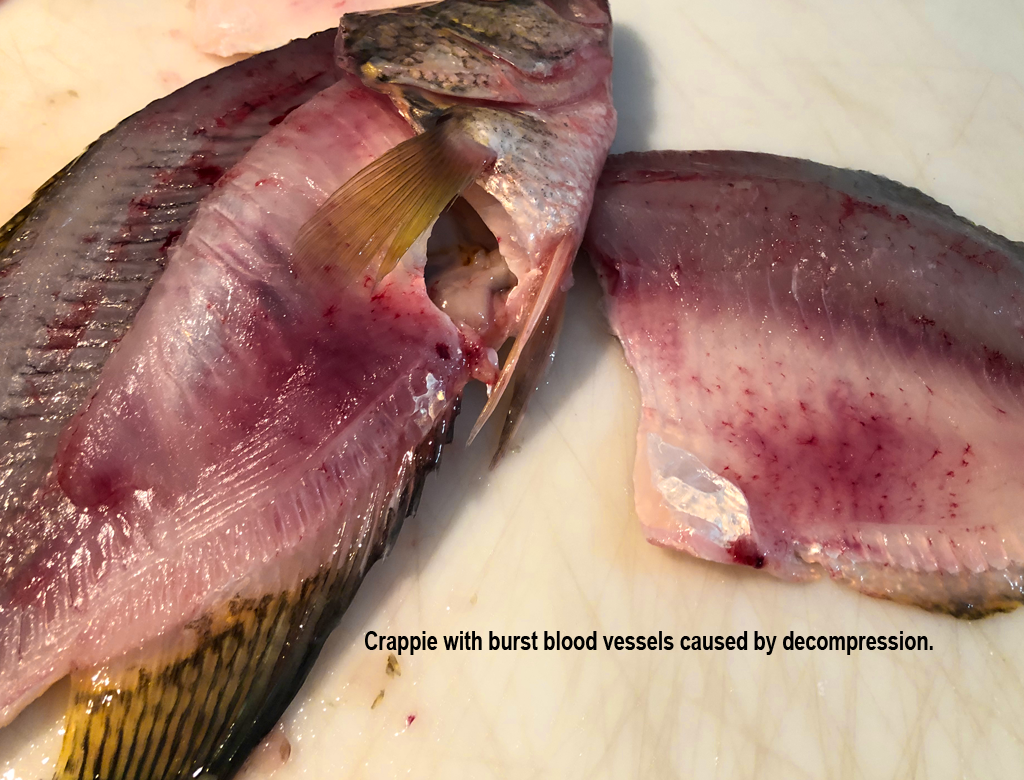

A yelloweye rockfish experiencing barotrauma, see bulging eyes and inverted esophagus. It makes for a clownish appearance, but in fact this is a fish experiencing severe barotrauma! What is even more incredible is that these fish ARE NOT DEAD!įigure 4. When they are caught and brought rapidly to the surface, their stomach pops out of their mouth like a balloon and their eyes bulge out of their head (Fig. Rockfish live on or near the bottom of the ocean. The most obvious example is in rockfish species. Now, when deepwater fish are brought rapidly to the surface, it causes their body parts, which are acclimated to high pressure, to expand. This is just one example of how fish have evolved to thrive under great water pressure. (Source: SOI/HADES/University of Aberdeen, Dr. Footage of the (known) deepest-living fish in the world – snailfish from the Mariana Trench. The deepest fish ever found, a snailfish, was just over 5 miles deep in the Mariana Trench (Fig. Burst cells are not good, at least if you want to stay alive! So far, this hypothesis of a biochemical limit in deep-sea fish still stands. Imagine filling a water balloon - if you add water to it rapidly, it will reach a breaking point and burst. At this depth, the amount of salt that naturally accumulates with TMAO in cells is similar to that of seawater if any more TMAO and therefore salt enters fish cells, seawater will begin to rush into cells to balance the concentrations of salt. However, it is thought that there is a biochemical limit for the use of adaptations like TMAO at ~5.1 mi deep. The utility of TMAO became clear when scientists found that the amount of TMAO in fish increases with depth! TMAO works by binding to water molecules, preventing water from being forced into protein structures and providing more room in the cell for proteins to do their job. If a protein cannot keep its shape or bind to its target, it cannot perform its function! One example of a deep-sea adaptation is the use of small organic molecules, like trimethylamine N-oxide (TMAO), to allow proteins to their job normally. Proteins are often called the workhorses of the cell these molecules have a particular shape which allows them to bind to and modify other molecules. Deep in the ocean, a protein from a land animal would be deformed as water under high pressure is pushed to the center of the protein.

This incredible stressor has driven the evolution of adaptations in fishes and other deep-sea organisms. Now imagine what the pressure must be like seven miles below sea surface, at the bottom of the Mariana Trench the pressure would be eight TONS psi ! This presents an incredible challenge to life in the ocean, because the deeper you go, the more pressure your body and all its parts (lungs, cells, proteins!) must withstand. If you’ve ever swam to the bottom of a pool, you can already feel extra pressure on your head and ears. Every ~112 feet you descend into the ocean, there is one additional atm of pressure acting on your body. This amount of pressure is called an atmosphere (atm). At sea level, earth’s atmosphere exerts 14.6 pounds of pressure per square inch (psi) of your body’s surface. So what happened to blobfish? Barotrauma! This term refers to physical trauma caused to an organism from rapidly changing environmental pressure levels. Footage from the E/V Nautilus of alive blob sculpins (aka blobfish), looking a little less like yesterday’s jello. A blobfish at sea level is not so appetizing… (Source: kinskarije)įigure 2. What you might not know is that blobfish, formally known as blob sculpin ( Psychrolutes phrictus), does not look like a blobfish, at least not 9,200 feet (1.7 mi) below the surface of the ocean. It has made its way around the world in memes, stuffed animals, and even featured in Saturday Night Live. Blobfish rose quickly to internet fame for its sad, saggy, mucousy looking face (Fig 1).


 0 kommentar(er)
0 kommentar(er)
